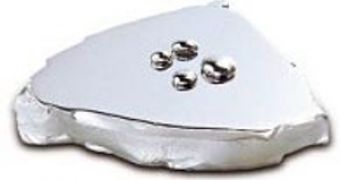Payments spotted in Liquidmetal's 8-K filing with the U.S. Securities and Exchange Commission this week suggest Apple paid at least $10.9 million for the exclusive rights to use the company's unique metal alloys.
A report by AppleInsider notes that, soon after Liquidmedal had reportedly licensed its ultra-durable materials to Apple, a debt of $10.9 million was immediately paid off by the former.
"The foregoing obligations were paid with proceeds from the previously announced strategic licensing transaction with Apple Inc.," the filing reportedly reads.
Not surprisingly, the debt payments were made on the same day Apple and Liquidmetal entered into their agreement - August 5th.
Earlier this week, an SEC filing revealed that Apple had struck a deal with Delaware-based Liquidmetal Technologies to obtain rights for using its patented materials.
Most of the payments were reportedly made to cover all of the company’s outstanding 8% Senior Secured Convertible Notes ($8.2 million).
Some $2.4 million was commissioned to Ricardo Salas and Norden LLC for unsecured debt. Finally, $0.3 million went to HANA Financial (secured debt), AppleInsider notes.
An SEC filing unearthed by Jay Rickey of Citybizlist (via The Baltimore Sun) specifically said: “On August 5, 2010, Liquidmetal Technologies, Inc., a Delaware corporation (“Liquidmetal”), entered into a Master Transaction Agreement with Apple Inc., a California corporation (“Apple”)…”
The ultra-durable, scratch-resistant, anti-corrosive materials may end up in future iPods, iPhones and other Apple products that rely on strong, durable casings, Softpedia speculated at the time.
Liquidmetal Technologies is a leading force in the research, development and commercialization of amorphous metals.
The technology behind Liquidmetal alloys enables the optimization of properties for specific applications by combination of process, chemistry and atomic structure, the inventors say.
Labeled as a revolutionary class of materials, Liquidmetal alloys have superior properties, such as high yield strength, high hardness, superior strength-to-weight ratio, super elastic limit, high corrosion and high wear resistance, as well as unique acoustical properties.
The materials have a unique "amorphous" atomic structure, and include a multi-component chemical composition.

 14 DAY TRIAL //
14 DAY TRIAL //